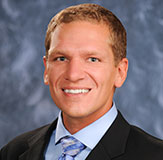Spine
Back Pain
The incidence of back pain has drastically increased. Approximately 90% of Americans experience back pain at different stages of their life. In America, the annual expenditure for the treatment of back pain is approximately $50 billion. Back pain is not a disease; rather it is a symptom due to an underlying pathology.
Presentation
Pain in the lumbosacral region (lower back) is the most common type of back pain. Back pain may have a variable presentation.
- Pain localized to the lower back or pain radiating down the front, side or back of the legs
- Worsening of the pain with physical activity
- Aggravation of the pain at night or by sustained sitting posture such as long drives
- Numbness or weakness in the legs, which may result in difficulty to stand or inability to perform upward and downward movements of the foot
Causes
The common causes of back pain are as follows:
- Abdominal disorders such as appendicitis, kidney diseases, aneurysms, bladder infection, kidney infection, pelvic infection, and ovarian disorders
- Conditions such as pregnancy, due to stretching of ligaments and irritation of the nerves
- Tumors
- Spinal disorders such as herniated disc, spinal stenosis, cauda equine syndrome, fibromyalgia, osteomyelitis and spondylitis
- Inflammation of the spinal nerves
- After back surgery
Diagnosis
The diagnosis of the back pain includes medical history, physical examination and use of imaging techniques such as X-rays, MRI scan, CT scan and electromyogram or EMG. In some cases, blood tests such as sedimentation rate and complete blood count (CBC) may be also be ordered.
Treatment
Management of back pain comprises of rest, improvement in sitting or standing posture and medications. Different classes of medications such as NSAIDs, opioids analgesics, muscle relaxants and steroids may be prescribed. Surgery is recommended in cases which fail to respond to conservative modalities of treatment and in conditions such as herniated disc and other spinal disorders.
Spine Trauma
Spine trauma is damage to the spine caused from a sudden traumatic injury caused by an accidental fall or any other physical injury. Spinal injuries may occur while playing, performing normal activities, operating heavy machines, lifting heavy objects, driving automobiles, or when you suffer a fall. Injury to spine may cause various conditions including fractures, dislocation, partial misalignment (subluxation), disc compression (herniated disc), hematoma (accumulation of blood) and partial or complete tears of ligaments.
The most common symptom of spinal injuries is pain. Spinal injury causes weakness and sensory loss if the spinal nerves are damaged. Symptoms may proceed to paralysis, limited movement, and immobility. Spinal injuries are diagnosed using spine X-rays and a computed tomography (CT) scan or magnetic resonance imaging (MRI) of the spine.
The treatment will depend entirely on the specific type and location of the injury. You may be treated with pain medications, epidural injections (injecting into spine), physiotherapy, and surgery. Surgery is recommended when other treatments are a failure or inappropriate. Surgery for spinal condition depends on the type and severity of injury. Some of the common spinal surgeries include:
- Coccygectomy - Coccygectomy is a surgical procedure which involves removal of part or entire portion of tailbone (coccyx) present at the end of your spine. It is performed in patients who have persistent tailbone pain due to injury, fall or contact sports and when all other conservative treatments are a failure.
- Spinal decompression - Decompression is a procedure of relieving pressure on one or many “pinched nerves” of the backbone. Spinal decompression is performed by two procedures microdiscectomy and laminectomy. Microdiscectomy is a minimally invasive procedure which involves removal of a portion of a slipped disc by a surgical instrument or LASER. Laminectomy is a procedure in which a small portion of the roof of the spinal bone is removed to relieve pressure on pinched nerve.
- Discectomy - It is a surgical procedure performed for the removal of the fragment of slipped disc, also known as bulging disc or herniated disc.
- Transforaminal lumbar interbody fusion - Fusion surgery is a surgical procedure where the damaged disc between two vertebrae in lumbar region of spine is removed in lumbar region of spine and the vertebrae are fused together.
- Decompression fusion - This is a surgical procedure that includes both decompression and fusion. Decompression relieves the pressure from the spinal cord and/or nerve roots and fusion surgery helps in joining the two vertebrae. This procedure is performed to reduce deformity and stabilization, minimizing neurological injury and early rehabilitation of the spine.
Your spine surgeon may recommend rehabilitation program to promote complete and faster healing.
Degenerative Disc Disease
Degenerative disc disease is a condition where the intervertebral disc, the gel-like material between the vertebrae, has begun to wear out due to aging, repetitive stress, smoking, injury, formation of bone spurs or obesity.
Symptoms
Symptoms vary from person to person. Some patients have no pain while others may experience severe pain. Depending upon the location of the affected disc the condition may cause:
- Neck or arm pain
- Back pain
- Numbness or tingling in the arms or legs
- Pain in the thighs and buttocks
The pain is aggravated by movements such as bending, lifting or twisting.
Diagnosis
Degenerative disc disease is usually diagnosed based on medical history, physical examination and neurological examinations. Diagnostic imaging techniques such as X-rays, CT scan or MRI scans, may be employed to confirm the diagnosis.
Treatment
Nonsurgical treatment options such as medications (pain medication, narcotic medication, NSAIDs, muscle relaxants, antidepressants), rest, exercise, a spinal block and physical therapy may be recommended when there is no evidence of nerve root compression or muscle weakness. Surgery is considered when conservative treatment options fail to relieve the symptoms over a period. Spinal decompression along with a discectomy and fusion is usually performed to remove the affected disc and fuse the adjoining vertebrae to stabilize the spine.
Herniated Disc
The bones in the spinal column called vertebrae surround the spinal cord and other nerves, and are cushioned by soft intervertebral discs that act as shock absorbers for the spine. The intervertebral discs are composed of a jelly-like nucleus pulposus at the center, surrounded by a fibrous ring called the annulus fibrosus. A herniated disc is a condition in which the outer fibrous annulus of the intervertebral disc is damaged, causing the nucleus to protrude through the ruptured annulus and compress the adjacent nerve root and/or spinal canal. Herniated discs are also known as a slipped disc or ruptured disc. Wear and tear due to aging, repetitive strenuous movements, smoking, improper lifting and being overweight may alter the structure and function of these discs.
Symptoms
The predominant symptom of a herniated disc is pain, which can range from mild to severe and is usually aggravated by movement. The most common signs and symptoms of a herniated disc are as follows:
- Herniated disc in the lower back causes back pain that radiates to the buttocks and legs
- Herniated disc in the neck causes neck pain that radiates to the shoulders and upper arms
- Numbness or tingling sensation
- Muscle weakness
- Rarely, bowel and bladder dysfunction
Diagnosis
An accurate diagnosis and an effective treatment plan are important for a successful outcome. Your doctor will usually diagnose a herniated disc based on your history of symptoms along with a physical examination, where your sensations, reflexes and the strength of the muscles are evaluated. Imaging tests such as X-rays, MRI or CT scans or electromyography (measures nerve signals to muscles) may be ordered to confirm the diagnosis of a herniated disc.
Treatment
Treatment comprises of conservative and surgical options. Conservative treatment may include rest, anti-inflammatory and pain medications, muscle relaxants, cold or hot compresses, activity and posture modifications, physical therapy, spinal injections, electrical stimulation, traction or braces. You doctor may recommend a combination of two or more treatment modalities to enhance the potential of success of the treatment.
Surgery is not always indicated for herniated disc. It is considered if you have an unstable spine, neurological dysfunction or persistent pain that does not respond to conservative treatment. A minimally invasive spine surgery may be performed to remove the protruding portion of the disc. In rare cases, the entire disc is removed, and the adjacent vertebrae are fused or an artificial disc is inserted.
Your surgeon will discuss surgical options and recommend the most appropriate treatment plan for you.

 Menu
Menu




